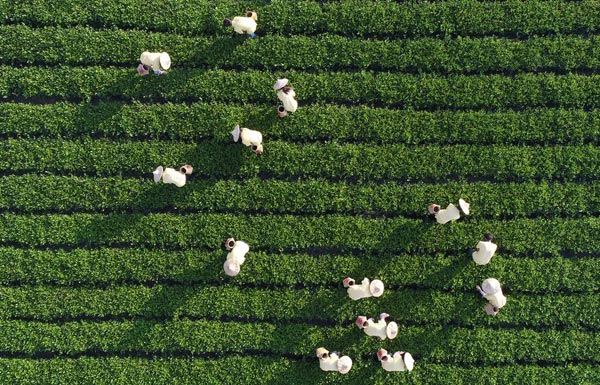
Privacy statement: Your privacy is very important to Us. Our company promises not to disclose your personal information to any external company with out your explicit permission.

With a few minor exceptions, there are really only two ways to say "tea" in the world. One is like the English term-té in Spanish and tee in Afrikaans are two examples. The other is some variation of cha, like chay in Hindi.
Both versions come from China. How they spread around the world offers a clear picture of how globalization worked before "globalization" was a term anybody used. The words that sound like "cha" spread across land, along the Silk Road. The "tea"-like phrasings spread over water, by Dutch traders bringing the novel leaves back to Europe.
The term cha is "Sinitic," meaning it is common to many varieties of Chinese. It began in China and made its way through central Asia, eventually becoming "chay" (چای) in Persian. That is no doubt due to the trade routes of the Silk Road, along which, according to a recent discovery, tea was traded over 2,000 years ago. This form spread beyond Persia, becoming chay in Urdu, shay in Arabic, and chay in Russian, among others. It even it made its way to sub-Saharan Africa, where it became chai in Swahili. The Japanese and Korean terms for tea are also based on the Chinese cha, though those languages likely adopted the word even before its westward spread into Persian.
But that doesn`t account for "tea." The Chinese character for tea, , is pronounced differently by different varieties of Chinese, though it is written the same in them all. In today`s Mandarin, it is chá. But in the Min Nan variety of Chinese, spoken in the coastal province of Fujian, the character is pronounced te. The key word here is "coastal."
The te form used in coastal-Chinese languages spread to Europe via the Dutch, who became the primary traders of tea between Europe and Asia in the 17th century. The main Dutch ports in east Asia were in Fujian and Taiwan, both places where people used the te pronunciation. The Dutch East India Company`s expansive tea importation into Europe gave us the French thé, the German Tee, and the English tea.
Yet the Dutch were not the first to Asia. That honor belongs to the Portuguese. And the Portuguese traded not through Fujian but Macao, where chá is used. That`s why Portugal is a pink dot in a sea of blue.
A few languages have their own way of talking about tea. These languages are generally in places where tea grows naturally, which led locals to develop their own way to refer to it. In Burmese, for example, tea leaves are lakphak.
What's more, if you have any interested in EVA boat decking sheet or EVA SUP Pad & EVA Traction Pad, please feel free to contact us.
Melors Team
2018.01.26
E-mail:admin@melorsfoam.com
Skype:helen.oscar
WhatsApp:+86-13699812532
Tel:+86-752-3553578
LET'S GET IN TOUCH

Privacy statement: Your privacy is very important to Us. Our company promises not to disclose your personal information to any external company with out your explicit permission.

Fill in more information so that we can get in touch with you faster
Privacy statement: Your privacy is very important to Us. Our company promises not to disclose your personal information to any external company with out your explicit permission.